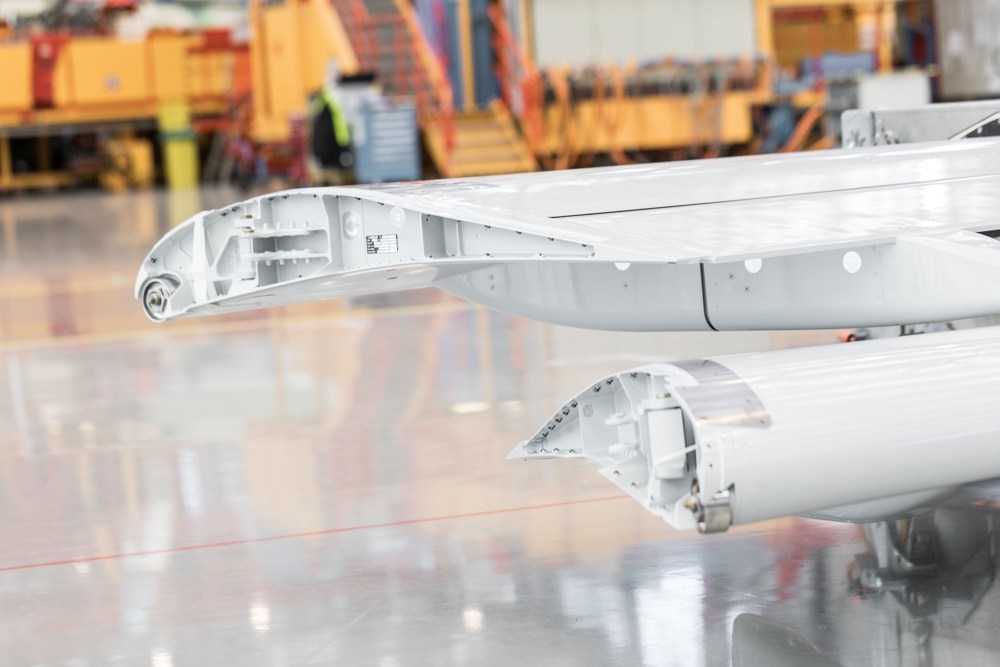Adhesives bridge the automation gap

Mike Richardson met with Henkel’s global key account manager, aerospace, Guido Adolph during the recent JEC World Paris event to hear about the company’s latest potting compounds and liquid shim product developments.
Henkel was at the recent JEC World exhibition to announce the construction of a new production facility for aerospace materials at its Montornès del Vallès, Spain site. The facility will include new buildings and equipment for additional production and warehouse capacities to support key trends in the industry, such as lightweighting and automation. Due to the global presence of our key customers, Montornès will become Henkel’s European hub for the aerospace industry.
Henkel also used JEC World to turn the spotlight on its Loctite aerospace potting compounds for interior panel manufacture, and which are said to offer improved micro-cracking resistance, optimise density/strength ratios and flame retardancy for honeycomb sandwich structures.
These advanced materials feature major improvements over conventional potting compounds. Typical applications include primary and secondary structures, such as fuselage and wing components, as well as interior panels.
Henkel sees a growing demand for consolidated structural designs capable of providing significant reductions in weight, fuel consumption and CO₂ emission, as well as manufacturing time and system cost.

Henkel provides a range of composite assembly solutions for secondary structures that it claims define the way modern aircraft are being built. It’s broad portfolio of high performance Loctite solutions including high temperature potting compounds used on honeycomb composite parts requiring high compressive strength at elevated temperatures.
The potting plot thickens
Ideal for the reinforcement of honeycomb sandwich panels, the application of honeycomb core potting compounds and edge sealing involves a mixture of automated, pneumatic and hand lay-up dispensing techniques.

“There is a clear industry trend for improving the processability of potting compounds so that they are easier to use around the various different areas of the aircraft,” begins Henkel’s global key account manager, aerospace, Guido Adolph. “This can involve the orientation of the panels, where there are materials with less ‘flow’, or if required, low density where weight reduction is a requirement. Lightweighting is certainly one of our big focus areas within the aerospace sector.”
Adolph moves on to discuss the company’s epoxy liquid shim material products which are employed to reduce part scrap rates by filling the gap created by part dimension mismatch. Liquid shims comprise specifically formulated paste adhesives that flow to fill gaps between two composite surfaces. The liquid shim product future target is to fill higher gaps up to 3mm and that can handle the bonding and fatigue stresses as well, once cured.
Henkel’s future target for Loctite AERO is as an epoxy shim product that offers improved out-time to facilitate bonding large parts, such as composite ribs to large wing skins.
“When it comes to improving material processability, such as with automated tape layup techniques, what is increasingly becoming more important are shim applications and how best to reduce processing time. Whilst Henkel has maintained solutions in its portfolio for some time, it wasn’t previously crucial to have high gap-filling properties. However, because the commercial aircraft production ramp-up rate is growing, manufacturers are looking to reduce the time it takes to repeatedly apply shim paste to a traditional material with say, 1mm gap-filling properties for example. Now, manufacturers want to apply it in one step to bridge the gap.
“This issue has come increasingly more into focus. Last year we presented our Loctite 9378 AERO Experimental. We are supporting the aircraft builders in optimising their manufacturing setup in terms of dispensing solutions and the automated application of compounds and pastes. For example, we offer Loctite 9394 together with our dispensing solution. Whilst we have many general dispensing solutions in the market, they don’t always fit perfectly with the adhesive they’re being applied to, so we now offer dispensing solutions alongside the material, if this is what the customer requires.”
Adolph says that some materials require different ratios between a variety of components, so the manufacturers of dispensing equipment are trying to develop their solutions in a way that fits most of the requirements on the market. But if you opt for a ‘one fits all’ solution, there will always be a ‘grey’ area where it doesn’t fit perfectly.
“Most aerospace adhesives require some level of customisation, and there are very few areas within the aircraft where customers can simply buy a solution ‘off the shelf’. Increasingly, bespoke customer solutions are needed which is much harder to satisfy if you don’t own the technology of the dispensing equipment, and you don’t own the technology of the chemistry of the adhesive. This is why Henkel proposes our customers think more about a holistic ‘system’ solution approach. We’ve seen some learning curves taken by our customers who were experimenting with different dispensing solutions and adhesives, but in the end, their learning curve has cost them money. Henkel can help by ensuring the customers’ process is running correctly – we’re not just trying to sell them adhesives.”
Automation fills the void
Ultimately, even in the realms of adhesives dispensing, there is still a requirement for a level of automation within the aerospace sector. Adolph concludes that while everyone is talking about automation, what does it really mean?
“When we talk about automation where composite materials handling is involved, many surface film and automated tape placement applications spring to mind, whereas the majority of compound, paste and adhesive applications are performed manually - it’s still very labour-intensive. It requires a huge step to get robotic equipment somehow supporting the operator in controlling precisely what adhesive is going where. The industry is striving to find how to make robotics smarter and also how to adapt dispensing solutions to this kind of automated technology. Ultimately, not only must automation support the operator, it must suit the adhesive materials being applied too.”












